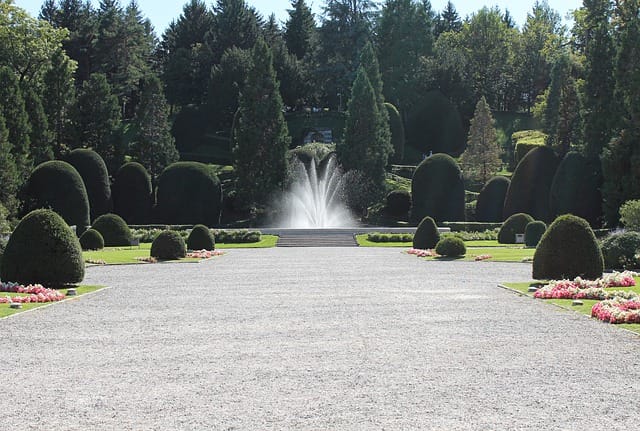Greatest gardens: Villa d'Este Gardens, Italy
Villa d'Este Gardens is a UNESCO World Heritage site located in Tivoli, Italy

In this article:
- Introduction
- Historical Background
- Location and Layout
- Architectural Features
- Water Features
- Sculptures and Fountains
- Musical Water Organ
- Garden Terraces
- Box Hedges and Topiaries
- Flowerbeds and Ornamental Plants
- Sacred Wood and Cypress Avenue
- Views and Vistas
- Garden Maintenance and Restoration
- Influence on Garden Design
- Conclusion
Introduction
Villa d'Este Gardens is a UNESCO World Heritage site located in Tivoli, Italy. It is renowned for its stunning Italian Renaissance gardens, architectural features, and water displays.
Historical Background
Villa d'Este was commissioned in the 16th century by Cardinal Ippolito II d'Este. It served as a retreat for the Cardinal and a symbol of his wealth and power. Over the centuries, the villa and its gardens underwent several transformations.
Location and Layout
Villa d'Este Gardens is situated on a hillside overlooking the town of Tivoli. The gardens cover an extensive area with various terraces, pathways, and viewpoints offering breathtaking views of the surrounding landscape.
Architectural Features
The villa exhibits an impressive architectural design with its grand façade, loggias, and intricate details. The combination of Renaissance and Mannerist styles creates a unique and visually pleasing aesthetic.
Water Features
One of the highlights of Villa d'Este Gardens is its intricate water features. The gardens boast more than 500 fountains, waterfalls, and water jets, which were powered by an ingenious hydraulic system. These water displays add a sense of magic and beauty to the surroundings.
Sculptures and Fountains
The gardens are adorned with an impressive collection of sculptures and fountains, incorporating Greek and Roman mythological figures. These intricate artworks enhance the beauty of the garden and tell stories through their intricate details.
Musical Water Organ
A unique feature of the gardens is the musical water organ, known as the "Organ Fountain." This fountain is capable of playing various melodies using water instead of air passing through its pipes. It is a spectacular sight and a testament to Renaissance engineering marvels.
Garden Terraces
Villa d'Este Gardens consists of several terraces, each designed with different themes and features. These terraces create a sense of harmony and allow visitors to explore the gardens in a structured and enjoyable manner.
Box Hedges and Topiaries
The gardens are beautifully manicured with well-maintained box hedges and intricate topiaries. These provide structure and elegance to the garden, enhancing the overall visual appeal.
Flowerbeds and Ornamental Plants
Vibrant flowerbeds and carefully selected ornamental plants add color and fragrance to the gardens. You can admire a wide variety of flowers that bloom throughout the seasons, creating a captivating experience for visitors.
Sacred Wood and Cypress Avenue
The Sacred Wood and Cypress Avenue are serene areas within the gardens that offer a tranquil ambiance. Tall cypress trees line the avenue, providing shade and a sense of tranquility, while the Sacred Wood invites visitors to enjoy a peaceful stroll amidst lush greenery.
Views and Vistas
Villa d'Este Gardens is renowned for its breathtaking views and vistas. From various viewpoints within the garden, visitors can appreciate stunning panoramas of the surrounding countryside, including the picturesque town of Tivoli.
Garden Maintenance and Restoration
The gardens require regular maintenance and restoration work to preserve their timeless beauty. Skilled gardeners and specialists work tirelessly to ensure that the gardens remain an enchanting destination for visitors from around the world.
Influence on Garden Design
Villa d'Este Gardens has had a significant influence on garden design throughout history. Its innovative use of water features, terraces, and sculptures inspired many subsequent garden designs in Europe and beyond.
Conclusion
Villa d'Este Gardens is a masterpiece of Italian Renaissance garden design. Its combination of architectural features, water displays, sculptures, and breathtaking views make it a must-visit destination for garden enthusiasts and history lovers alike.
